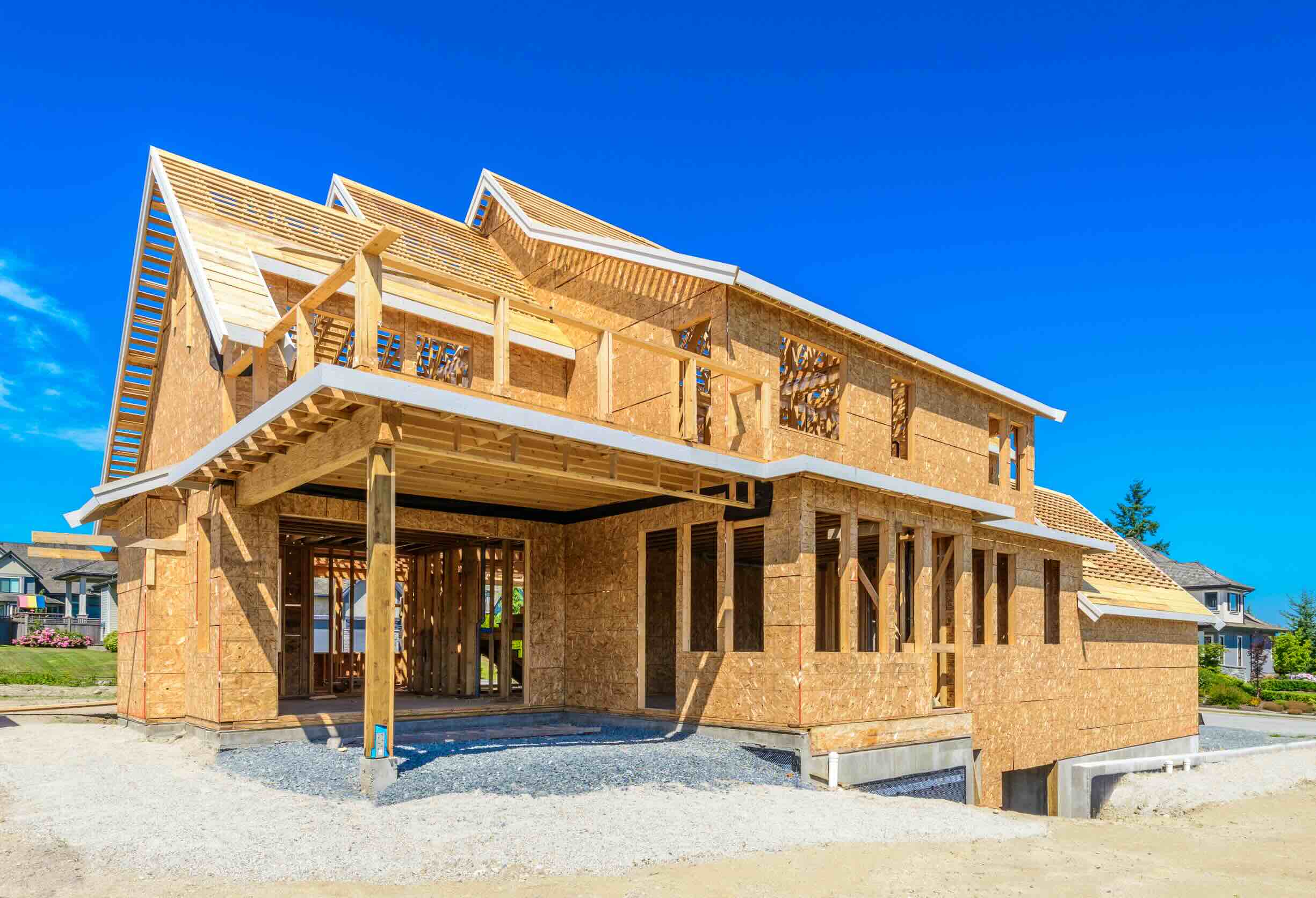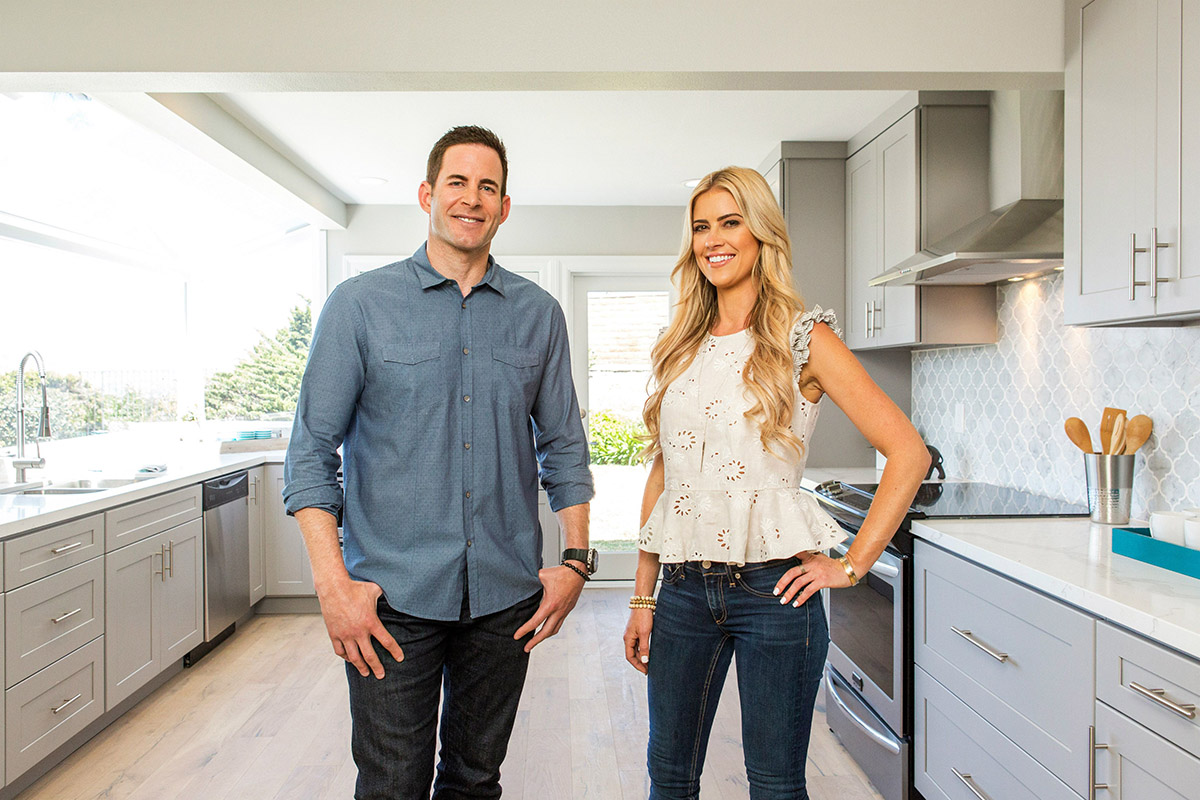Home>Renovation & DIY>Home Renovation Guides>How To Make A Home Improvement List


Home Renovation Guides
How To Make A Home Improvement List
Published: December 22, 2023
Discover essential home renovation guides and expert tips on creating a comprehensive home improvement list. Get started on your next project today!
(Many of the links in this article redirect to a specific reviewed product. Your purchase of these products through affiliate links helps to generate commission for Storables.com, at no extra cost. Learn more)
Introduction
So, you've decided to take on some home improvement projects. Whether you're a seasoned DIY enthusiast or a newbie looking to spruce up your living space, creating a comprehensive home improvement list is a crucial first step. This list will serve as your roadmap, guiding you through the myriad of tasks and decisions that come with renovating or enhancing your home. It's the foundation upon which successful home improvement projects are built.
Embarking on home improvement endeavors can be both exciting and daunting. From small-scale enhancements like painting a room or installing new fixtures to larger projects such as remodeling a kitchen or adding a deck, the possibilities are vast. However, without a clear plan and a well-organized list, these projects can quickly become overwhelming and chaotic.
Creating a home improvement list not only helps you stay organized but also allows you to set priorities, allocate resources, and track progress. It's a tool for envisioning the changes you want to make in your home and systematically bringing those visions to life. With the right approach, your home improvement list can turn what might seem like a daunting task into a manageable and rewarding experience.
In the following sections, we'll delve into the essential steps for creating a comprehensive home improvement list. From assessing your home's needs to setting priorities, researching and planning, creating a budget, gathering supplies, scheduling the work, executing the plan, and reviewing and updating, each step plays a vital role in the success of your home improvement projects. So, roll up your sleeves, grab a pen and paper, and let's get started on crafting the ultimate home improvement list.
Key Takeaways:
- Creating a home improvement list helps you stay organized, set priorities, and track progress. It turns daunting tasks into manageable and rewarding experiences, guiding you through the process of transforming your living space.
- Assessing your home, setting priorities, researching and planning, creating a budget, gathering supplies, scheduling the work, executing the plan, and reviewing and updating are essential steps for successful home improvement projects.
Read more: How To Make A Flood Channel Home Improvement
Assessing Your Home
Before diving into the realm of home improvement, it’s crucial to assess your home thoroughly. Take a walk through each room and the exterior spaces, paying close attention to any areas that require attention. Look for signs of wear and tear, outdated features, or areas that no longer meet your functional or aesthetic needs.
Start with the interior spaces. Are there rooms that feel cramped and could benefit from reorganization or expansion? Are there outdated fixtures or appliances that are begging for an upgrade? Assess the condition of your walls, floors, and ceilings. Look for any signs of water damage, cracks, or peeling paint that may indicate underlying issues.
Next, shift your focus to the exterior of your home. Inspect the condition of the roof, siding, windows, and doors. Are there any areas that require maintenance or repair? Consider the landscaping and outdoor living spaces as well. Are there opportunities to enhance your curb appeal or create a more functional and inviting outdoor environment?
As you assess your home, take note of your observations. Create a detailed list of all the areas that require attention, along with specific details about the improvements or repairs needed. This will serve as the foundation for your home improvement list, allowing you to prioritize tasks and allocate resources effectively.
Additionally, consider the long-term goals you have for your home. Are there any major renovations or additions you envision in the future? By assessing your home comprehensively, you can factor in these long-term goals and ensure that your immediate improvement projects align with your overarching vision for your living space.
Remember, the goal of assessing your home is not only to identify areas in need of improvement but also to gain a clear understanding of your home’s potential. By taking the time to assess your home thoroughly, you set the stage for creating a home improvement list that reflects your aspirations for your living space and sets the groundwork for transformative changes.
Setting Priorities
Once you’ve assessed your home and compiled a list of areas that require attention, it’s time to prioritize your home improvement projects. Setting priorities is essential for ensuring that you allocate your time, energy, and resources effectively. It allows you to focus on the most critical and impactful projects while maintaining a clear sense of direction.
Start by categorizing the items on your home improvement list based on urgency and importance. Identify any issues that pose safety hazards or require immediate attention, such as electrical problems, structural issues, or water damage. These should be top priorities to address, as they can impact the integrity and safety of your home.
Next, consider the projects that contribute to the overall functionality and comfort of your home. This may include repairing or replacing essential systems like heating, ventilation, and air conditioning (HVAC), plumbing, or insulation. Improvements that enhance energy efficiency and reduce utility costs can also fall into this category.
Once you’ve addressed the critical and functional aspects, turn your attention to projects that enhance the aesthetic appeal and livability of your home. This could involve updating interior and exterior paint, replacing flooring, upgrading fixtures, or reimagining the layout of certain spaces. Consider how each project contributes to your overall vision for your home and prioritize accordingly.
As you set priorities, it’s important to be realistic about your capabilities and resources. Consider the time, budget, and skill level required for each project. If certain tasks exceed your expertise or budget, consider seeking professional assistance or adjusting your timeline to accommodate these projects in the future.
By setting priorities, you establish a clear roadmap for tackling your home improvement projects. This approach helps you avoid feeling overwhelmed and ensures that you make meaningful progress towards enhancing your living space. With your priorities set, you’re ready to move forward with confidence and purpose, knowing that your home improvement list reflects a thoughtful and strategic approach to transforming your home.
Researching and Planning
Researching and planning are fundamental steps in the home improvement process, laying the groundwork for successful and well-executed projects. As you embark on this phase, take the time to gather inspiration, explore potential solutions, and develop a comprehensive plan for bringing your home improvement list to life.
Begin by seeking inspiration from various sources. Browse home improvement magazines, websites, and social media platforms to gather ideas and trends that resonate with your vision for your home. Create a digital or physical mood board to compile images, color palettes, and design concepts that inspire you. This visual representation will serve as a valuable reference as you plan your projects.
Next, delve into the specifics of each project on your home improvement list. Research different materials, products, and techniques that align with your goals. Whether you’re considering a kitchen remodel, a bathroom upgrade, or a landscaping project, understanding the available options and their respective benefits is essential for making informed decisions.
As you research, consider the practical aspects of your projects. Take measurements, assess the compatibility of materials with your existing space, and evaluate the potential impact on your home’s functionality. This level of detail will inform your planning process and ensure that your projects are tailored to meet your specific needs and preferences.
Once you’ve gathered inspiration and conducted thorough research, it’s time to translate your findings into a cohesive plan. Create a project timeline that outlines the sequence of tasks, allowing for a logical and efficient progression from start to finish. Consider any dependencies between projects and factor in time for potential setbacks or adjustments.
Additionally, develop a detailed budget for each project, accounting for materials, labor, permits, and unexpected expenses. A well-defined budget will help you manage costs effectively and avoid financial stress as you move forward with your home improvement endeavors.
By dedicating time to researching and planning, you equip yourself with the knowledge and foresight needed to execute your home improvement projects with confidence. This phase sets the stage for a smooth and organized implementation, ensuring that your vision for your home becomes a reality through thoughtful and well-informed planning.
Creating a Budget
One of the most critical aspects of home improvement projects is creating a comprehensive budget. A well-defined budget not only helps you manage costs effectively but also allows you to make informed decisions and prioritize your projects based on financial considerations. As you embark on this phase, consider the following key elements to create a realistic and practical budget for your home improvement endeavors.
Start by conducting thorough research to understand the potential costs associated with each project on your home improvement list. Gather quotes from contractors, suppliers, and service providers to obtain a clear picture of the expenses involved. Factor in the cost of materials, labor, permits, and any additional fees or contingencies that may arise.
When creating your budget, it’s essential to account for both the direct and indirect costs of each project. Direct costs encompass the tangible expenses directly related to the project, such as materials and labor. Indirect costs include expenses that may not be immediately apparent but are essential for the successful execution of the project, such as tools, equipment rentals, and waste disposal.
Consider setting aside a contingency fund within your budget to accommodate unexpected expenses or unforeseen challenges that may arise during the course of your projects. Having a buffer for contingencies can provide peace of mind and ensure that you’re prepared to address any surprises without derailing your budget.
As you allocate funds for your home improvement projects, prioritize your budget based on the impact and importance of each project. Critical repairs and safety-related upgrades should take precedence, followed by projects that enhance the functionality and livability of your home. Finally, allocate resources for projects that contribute to the aesthetic appeal and overall ambiance of your living space.
Throughout the budgeting process, maintain a clear and realistic perspective on your financial capacity. Avoid overextending your resources and consider the long-term implications of your investment. If certain projects exceed your budget constraints, explore alternative solutions or consider phasing the projects over time to align with your financial capabilities.
By creating a well-defined budget for your home improvement projects, you empower yourself to make informed decisions and navigate the financial aspects of your endeavors with confidence. A carefully crafted budget serves as a guiding framework, ensuring that your resources are allocated efficiently and that your home improvement projects unfold within manageable financial parameters.
When making a home improvement list, start by walking through your home and noting any areas that need attention. Prioritize tasks based on urgency and budget.
Read more: What Are The Best Home Improvements To Make?
Gathering Supplies
As you progress through your home improvement journey, the next crucial step is gathering the necessary supplies and materials to bring your projects to fruition. Whether you’re tackling a small-scale renovation or a comprehensive remodeling endeavor, having the right tools and materials at your disposal is essential for a smooth and efficient execution of your plans.
Begin by revisiting your home improvement list and reviewing the specific requirements for each project. Create a detailed inventory of the materials, tools, and supplies needed, taking into account the quantity and quality required to achieve your desired outcomes. This comprehensive approach will help you avoid delays and ensure that you’re adequately prepared for each phase of your projects.
When sourcing supplies, explore a variety of options to find the best fit for your needs. Research reputable suppliers, hardware stores, and online retailers to compare prices, quality, and availability. Consider factors such as warranty, durability, and compatibility with your existing home infrastructure when selecting materials.
Depending on the scope of your projects, you may need to invest in specialized tools and equipment to facilitate the work. Evaluate whether renting or purchasing certain tools is more cost-effective and practical for your specific projects. Additionally, consider the long-term utility of tools that may have broader applications beyond your current endeavors.
As you gather supplies, pay attention to the logistical aspects of procurement and delivery. Coordinate the timing of material acquisition to align with your project schedule, ensuring that you have the necessary resources on hand when they are needed. Factor in lead times for ordering and delivery, especially for custom or specialized materials.
Throughout the supply gathering process, maintain a detailed record of your purchases and expenses to track your budget and ensure that you stay within the allocated financial parameters. This meticulous approach to managing your supplies and materials will contribute to the overall efficiency and success of your home improvement projects.
By methodically gathering the supplies and materials required for your home improvement projects, you set the stage for a seamless and productive implementation phase. Equipped with the right resources, you’re poised to tackle each project with confidence, knowing that you have the essential elements in place to bring your vision for your home to life.
Scheduling the Work
Once you’ve assessed your home, set priorities, researched and planned, created a budget, and gathered the necessary supplies, the next crucial step is scheduling the work for your home improvement projects. Effective scheduling ensures that your projects unfold in a logical and organized manner, maximizing efficiency and minimizing disruptions to your daily life.
Begin by reviewing your home improvement list and assessing the scope and complexity of each project. Consider the interdependencies between tasks and the optimal sequence for their execution. This evaluation will help you establish a comprehensive timeline that accounts for the progression of your projects in a cohesive and efficient manner.
When scheduling the work, take into account external factors that may impact the timeline, such as seasonal considerations, availability of contractors or service providers, and any potential disruptions to your home environment. Factor in any necessary permits or approvals that may be required for specific projects, allowing ample time for processing and compliance with regulations.
Consider the practical aspects of scheduling, such as the availability of resources, tools, and materials. Coordinate the delivery of supplies to align with the timeline of your projects, ensuring that you have the necessary components on hand when they are needed. Anticipate any potential delays or challenges that may arise and build flexibility into your schedule to accommodate unforeseen circumstances.
If your home improvement projects involve contracting external services, such as plumbing, electrical work, or construction, communicate clearly with the service providers to establish realistic timelines and expectations. Ensure that all parties involved are aligned on the schedule and that any potential conflicts or constraints are addressed proactively to avoid disruptions to the workflow.
Throughout the scheduling process, maintain open communication with all stakeholders involved in your home improvement projects. Keep your family members or cohabitants informed about the schedule and any potential disruptions to their routines. Clear and transparent communication fosters a collaborative and supportive environment as you embark on transforming your living space.
By meticulously scheduling the work for your home improvement projects, you lay the groundwork for a structured and efficient implementation phase. This proactive approach allows you to navigate the complexities of multiple projects with clarity and purpose, ensuring that each task unfolds in a coordinated and harmonious progression towards enhancing your home.
Executing the Plan
With your home improvement projects meticulously planned, scheduled, and prepared, it’s time to transition to the execution phase. Executing the plan is where your vision for your home begins to take shape, and each carefully considered detail comes to life. As you embark on this phase, it’s essential to approach the execution of your projects with precision, attention to detail, and a focus on achieving the desired outcomes.
Start by revisiting your project schedule and timeline, ensuring that all necessary preparations have been made to facilitate a smooth and efficient workflow. Verify that you have the required tools, materials, and resources readily available for each phase of the projects, minimizing the potential for interruptions or delays.
If you’ve enlisted the services of contractors or professionals for specific aspects of your projects, maintain open lines of communication and oversight to ensure that the work aligns with your expectations and the established timeline. Regularly assess the progress and quality of the work, addressing any concerns or deviations from the plan proactively to maintain the integrity of your projects.
As you execute the plan, pay close attention to the finer details of each task. Whether you’re painting walls, installing fixtures, or reconfiguring spaces, precision and craftsmanship are key to achieving a polished and professional result. Take the time to ensure that each element of your projects aligns with your vision and contributes to the overall coherence of your home’s transformation.
Throughout the execution phase, maintain a flexible and adaptive mindset, acknowledging that unforeseen challenges or adjustments may arise. Approach these situations with resilience and resourcefulness, seeking creative solutions and leveraging the support of professionals or experienced individuals when needed.
As the various elements of your home improvement projects come together, take pride in the progress and the tangible results of your efforts. Celebrate the milestones and the incremental transformations that contribute to the overall enhancement of your living space. Embrace the process as an opportunity for personal growth and the expression of your creativity and vision for your home.
By executing the plan with diligence and dedication, you bring your home improvement projects to fruition with a sense of purpose and accomplishment. This phase represents the culmination of your meticulous planning and preparation, marking the transition from conceptualization to tangible realization as you witness the positive evolution of your living environment.
Reviewing and Updating
As you near the completion of your home improvement projects, it’s essential to shift your focus towards reviewing the outcomes and updating your plans for the future. The process of reviewing and updating allows you to reflect on the progress made, assess the results of your efforts, and consider any additional enhancements or modifications that may be warranted.
Begin by conducting a comprehensive review of each completed project, evaluating the quality of the work, the alignment with your initial vision, and the overall impact on your living space. Take note of any areas that exceed your expectations as well as aspects that may require further attention or refinement.
Engage in open dialogue with family members or cohabitants to gather feedback on the changes made to your home. Consider their perspectives and experiences, as their insights can provide valuable input for future updates or additional projects. Encourage an open and collaborative discussion to ensure that everyone’s needs and preferences are taken into account.
As you review the outcomes of your home improvement projects, take the opportunity to update your long-term plans and aspirations for your living space. Consider any new ideas or inspirations that have emerged throughout the process and integrate them into your vision for the future. This phase serves as a catalyst for continuous improvement and evolution of your home environment.
Assess the functionality and usability of the completed projects, identifying any adjustments or optimizations that can further enhance the livability and comfort of your home. Whether it’s fine-tuning the layout of a room, adding supplementary features, or exploring innovative design concepts, updating your plans allows you to maintain a dynamic and responsive approach to home improvement.
Finally, celebrate the achievements and the transformative impact of your home improvement endeavors. Take pride in the dedication and effort invested in enhancing your living space, recognizing the positive influence it has on your daily life and well-being. Embrace the iterative nature of home improvement, acknowledging that the process of reviewing and updating is an ongoing and enriching journey.
By engaging in the process of reviewing and updating, you ensure that your home remains a reflection of your evolving aspirations and preferences. This reflective approach fosters a sense of continuous improvement and adaptability, empowering you to cultivate a living environment that resonates with your vision and enriches your daily experiences.
Frequently Asked Questions about How To Make A Home Improvement List
Was this page helpful?
At Storables.com, we guarantee accurate and reliable information. Our content, validated by Expert Board Contributors, is crafted following stringent Editorial Policies. We're committed to providing you with well-researched, expert-backed insights for all your informational needs.















0 thoughts on “How To Make A Home Improvement List”